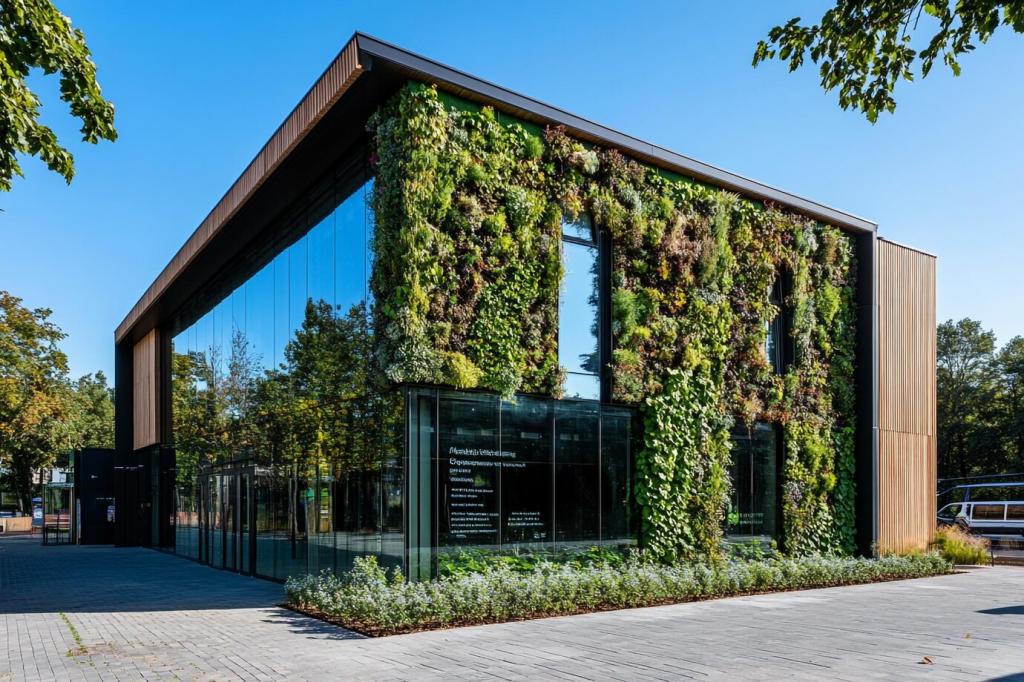Sustainable Materials Revolutionizing Home Building Industry
The evolution of home building is being shaped by the pressing need to mitigate environmental impact and embrace sustainability. As awareness around climate change grows, the home construction sector is embracing innovative materials that not only lower the carbon footprint but also provide lasting value and durability. Sustainable materials are no longer a niche option but a central pillar in how modern homes are designed and built. This transformation promises to set new standards for environmental stewardship, energy efficiency, and occupant well-being in residential developments worldwide.

Bamboo: Nature’s Rapidly Renewable Wonder
Bamboo has emerged as a standout sustainable material, thanks to its remarkable strength-to-weight ratio, rapid growth cycle, and minimal resource requirements. Unlike hardwoods that can take decades to mature, bamboo regenerates in just a few years, making it a highly renewable resource. It requires little water, no pesticides, and sequesters substantial amounts of carbon dioxide, further aiding in environmental preservation. In home construction, bamboo is utilized for flooring, paneling, cabinetry, and even as a structural element, offering a beautiful aesthetic and impressive durability. Its natural resistance to moisture and pests makes it suitable for various climates, while its flexibility lends itself to innovative design.
Reclaimed and Recycled Materials
Incorporating reclaimed wood, recycled metals, and repurposed glass into residential builds is gaining momentum as both an eco-friendly and aesthetically unique approach. Reclaimed materials reduce demand for new raw resources, minimizing deforestation and mining while diverting usable products from landfills. For example, salvaged wood beams and floorboards infuse homes with a sense of history and character, whereas recycled steel ensures structural resilience with significantly reduced embodied energy compared to virgin steel. Architects and builders are finding creative ways to showcase these materials, leading to distinctive homes that tell a story and celebrate the circular economy.

Enhanced Energy Efficiency and Resource Conservation
State-of-the-art insulation materials, such as sheep’s wool, cellulose derived from recycled paper, and advanced aerogels, are transforming the energy efficiency of modern homes. These materials surpass traditional fiberglass in their ability to limit heat transfer, reducing reliance on heating and cooling systems. Not only do they minimize energy bills, but they also regulate indoor moisture and air quality. By decreasing the demand for energy during a building’s lifetime, high-performance insulations cut greenhouse gas emissions and make homes more comfortable year-round, all while supporting a healthier indoor environment for occupants.
Health and Wellness Benefits of Sustainable Home Materials
Modern sustainable materials prioritize human health by avoiding volatile organic compounds (VOCs), heavy metals, and other potentially hazardous substances. Finishes, paints, adhesives, and flooring options now commonly feature low or zero emissions, drastically reducing the buildup of harmful airborne chemicals indoors. This shift is especially important in tightly sealed, energy-efficient homes, where indoor air quality can otherwise be compromised. Selecting non-toxic materials supports the respiratory health of all occupants, helping to prevent allergies, asthma, and other chronic health issues.
Sustainable materials such as natural clay plasters, untreated woods, and breathable insulation materials actively contribute to superior indoor air quality. These materials either passively absorb excess moisture and pollutants or facilitate natural airflow through the building envelope. The result is a home environment that encourages consistent air exchange, maintains comfortable humidity levels, and minimizes the presence of dust and allergens. As health and wellness become an integral part of home design, eco-friendly materials emerge as a vital strategy for cultivating safe, nurturing living spaces.
Materials like rammed earth, adobe, and phase change panels provide exceptional thermal mass, helping homes maintain stable and comfortable temperatures throughout the year. These products absorb heat during the day and release it at night, naturally evening out fluctuations in indoor climate without the need for energy-intensive HVAC systems. By leveraging the inherent properties of sustainable materials, builders can design homes that feel consistently inviting and restful while drastically reducing energy consumption.

